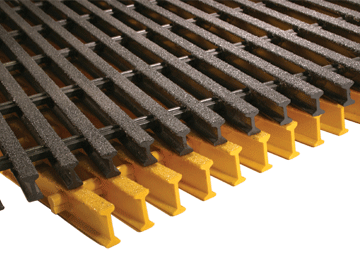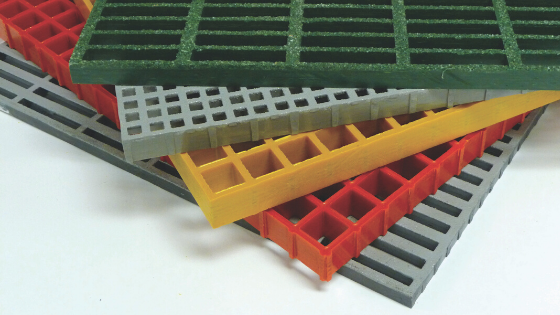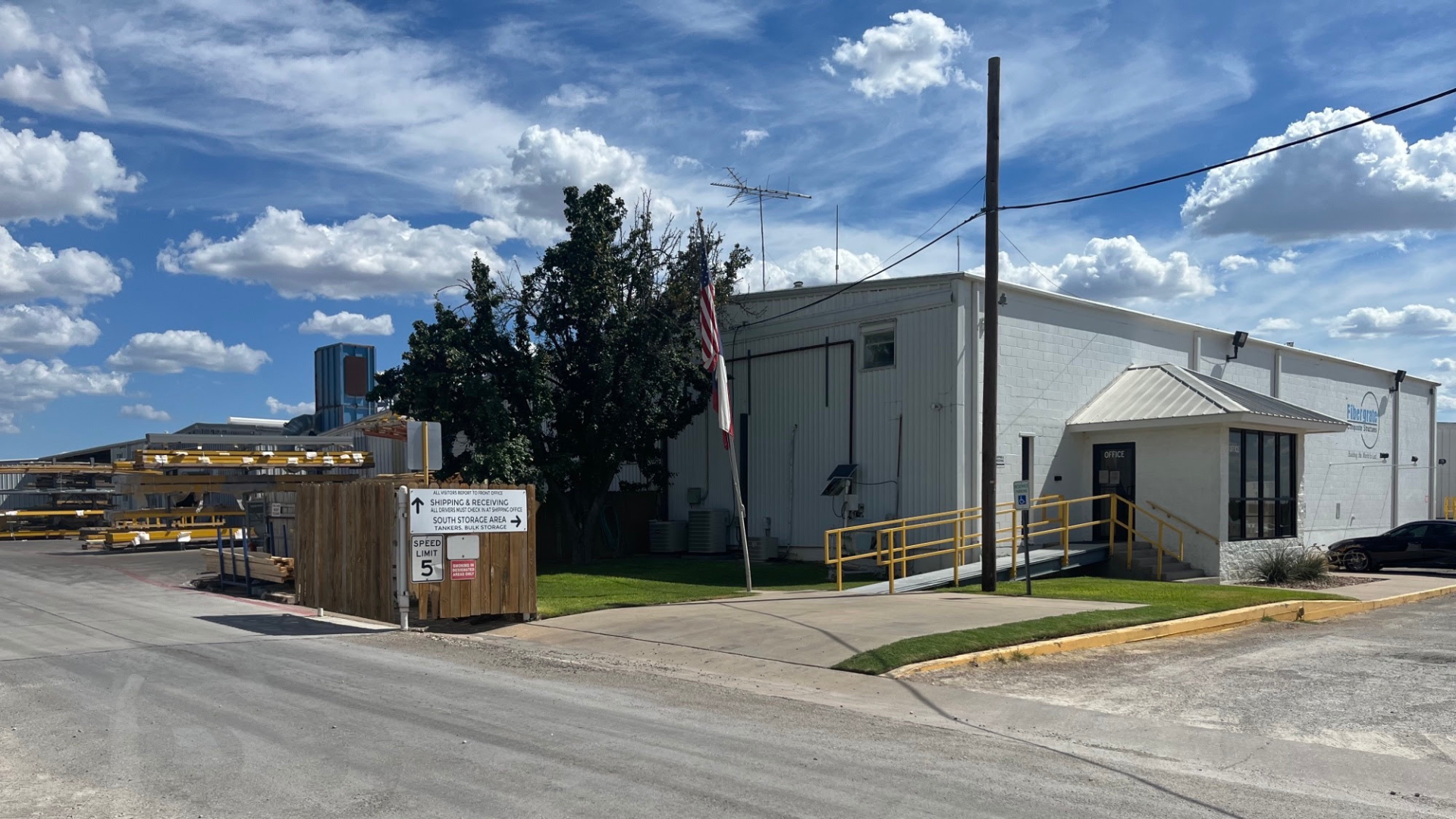Glass reinforced plastics are versatile materials used in an ever-increasing array of applications,...
The Making of Glass Reinforced Plastics (GRP)
Glass reinforced plastics are versatile materials used in an ever-increasing array of applications, from industrial equipment and chemical processing to consumer goods. But have you ever wondered how these strong and lightweight materials are made?
Here is a look at the manufacturing process for GRP.
Manufacturing Process for Pultruded Glass-Reinforced Plastic

Fibergrate pultruded grating
Pultrusion is the primary method for creating GRP products with continuous profiles, such as rods, bars, beams, and channels. It is also used to produce GRP grating with a high load capacity. Here is a simplified overview of the process:
- Selection of Materials: The process begins with selecting the appropriate resin and fibreglass materials based on the desired properties of the final product. Depending on the application, the resin can be polyester, vinyl ester, or epoxy.
- Preparation of Fibreglass: Fibreglass, typically in the form of rovings (bundles of continuous glass filaments), mats, or fabrics, is pulled through a resin bath to embed it with the chosen resin. This ensures that the fibreglass is thoroughly coated with resin for optimal strength and durability.
- Pultrusion: The coated fibreglass is then pulled through a series of heated dyes or moulds. These dyes shape the composite material into the desired profile or cross-section while curing the resin. The pultrusion process is continuous, meaning that the material is pulled through the dyes at a constant rate for a uniform result.
- Curing: As the coated fibreglass passes through the heated dyes, the resin undergoes curing, which involves a chemical reaction that transforms it from a liquid to a solid state. The exact temperature and curing time depend on the specific resin system being used.
- Cutting and Finishing: Once the pultruded profile has been cured and cooled, it is cut to the desired length and undergoes any necessary finishing processes, such as trimming or sanding, to achieve the final dimensions and surface quality.
- Quality Control: Throughout the manufacturing process, quality control measures are implemented to ensure that the finished GRP products meet the required specifications and standards for strength, appearance, and other performance characteristics.
Check out Fibergrate’s pultruded GRP products to see the end result.
Manufacturing Process for Moulded Glass Reinforced Plastics

Fibergrate GRP grating
For more complex shapes and parts, a process called compression moulding is often used:
- Preparation of Materials: Like in pultrusion, the process starts with selecting the appropriate resin and fibreglass materials based on the desired properties of the final product. Resins commonly used include polyester, vinyl ester, or epoxy, depending on factors like strength, corrosion resistance, and cost. Fibreglass reinforcements can be in the form of chopped strands, mats, or fabrics.
- Mould Preparation: A mould, usually made of metal or composite materials, is prepared. The mould is typically in two halves to allow for easy removal of the finished product. It is cleaned and treated with a release agent, before laying the fibreglass reinforcement material, to prevent the composite from sticking to the mould surface.
- Laying Up: Layers of the fibreglass reinforcement material are manually or automatically laid up inside the mould cavity according to the desired thickness and orientation. This step can involve applying resin to the reinforcement layers as they are placed to ensure thorough impregnation.
- Compression: Once the desired number of layers has been laid up, the mould is closed and pressure is applied to compact the layers and remove any trapped air. Compression can be achieved through hydraulic presses, mechanical presses, or other methods, depending on the size and complexity of the part.
- Curing: With the mould closed and under pressure, the composite is cured. This involves initiating the resin curing process, either through the application of heat, chemical catalysts, or a combination of both. The curing process may take several hours to complete, depending on the resin system and part size.
- Demoulding: After the curing process is complete, the mould is opened, and the finished GRP part is removed. Care must be taken during demoulding to avoid damaging the part or the mould.
- Finishing: Once removed from the mould, the moulded GRP part may undergo additional finishing processes, such as trimming excess material, sanding, painting, or coating, to achieve the desired surface finish and dimensional accuracy.
- Quality Control: Like pultruded GRP, stringent quality control measures are implemented throughout the manufacturing process to verify that the finished products consistently meet or exceed the required specifications.
You can explore Fibergrate’s moulded gratings to see the durable and versatile products that come out of this process.
Read this to know the differences between molded & pultruded grating: Moulded Grating VS Pultruded Grating: Which One is Better?
What Additives Are Used in Glass Reinforced Plastic (GRP) Products?
Various additives are used to enhance the properties of GRP or aid in the manufacturing process:
- Fillers: Improve stiffness, strength, and dimensional stability.
- Pigments: Provide colour to the final product.
- UV Stabilizers: Protect against UV degradation.
- Flame Retardants: Enhance fire resistance.
- Release Agents: Facilitate removal from moulds.
- Thickeners: Improve resin application.
- Accelerators and Catalysts: Speed up curing.
- Modifiers: Enhance specific properties like impact or chemical resistance.
- Antioxidants: Prevent resin degradation.
The specific additives and their concentrations should be carefully selected to meet the unique requirements of each project.
Fibergrate's Glass Reinforced Plastics
At Fibergrate, we adhere to stringent quality control standards to ensure our customers receive the highest quality GRP products for their diverse applications.

Fibergrate manufacturing location
We hope this overview answers some of your questions about Glass Reinforced Plastics (GRP). If you would like to learn more about GRP and its applications, explore our full catalog of GRP products or contact our experts for personalized help.



